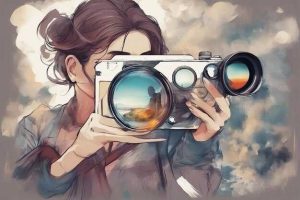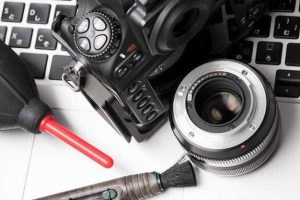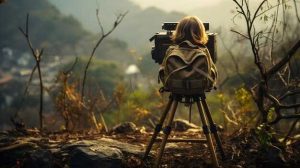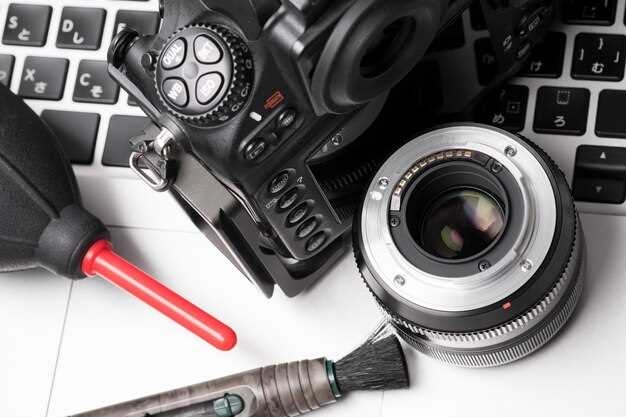
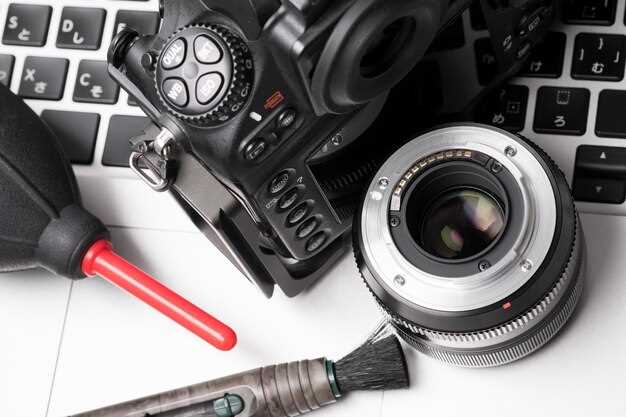
When it comes to capturing the world around us, there is no denying the power of a well-equipped camera. But what truly sets apart a good photograph from a great one? The answer lies in the lenses and accessories that accompany your camera, allowing you to explore new perspectives, capture stunning details, and unleash your creative vision.
Discovering the perfect lens for your photography needs is like finding the missing piece to a puzzle. It opens up a world of possibilities, enabling you to tell stories through your images with clarity and precision. Whether you’re a professional photographer or an enthusiastic hobbyist, selecting the right lens can make all the difference in achieving the desired effect, be it capturing breathtaking landscapes, freezing fast-paced action, or creating dreamy portraits.
But lenses are just the beginning. To truly elevate your photography game, you need to complement your gear with a carefully curated selection of accessories. From sturdy tripods that ensure stability and sharpness, to versatile filters that enhance colors and reduce glare, these add-ons can transform an ordinary shot into a work of art. Additionally, investing in reliable camera bags, memory cards, and cleaning kits will not only protect your equipment but also provide peace of mind during your photographic adventures.
Understanding Camera Lens Types: A Comprehensive Overview
Exploring the world of photography requires a deep understanding of the various camera lens types available. These lenses play a crucial role in capturing stunning images, allowing photographers to express their creativity and achieve their desired results. In this comprehensive overview, we will delve into the different types of camera lenses, their unique characteristics, and how they can enhance your photography experience.
Prime lenses, also known as fixed focal length lenses, are a popular choice among photographers seeking exceptional image quality and sharpness. These lenses have a fixed focal length, meaning they do not zoom in or out. Prime lenses are renowned for their wide maximum apertures, allowing for excellent low-light performance and beautiful background blur, commonly referred to as bokeh. They are ideal for portrait photography, street photography, and capturing detailed shots with precision.
On the other hand, zoom lenses offer versatility and convenience, allowing photographers to adjust the focal length and zoom in or out to capture a wide range of subjects. These lenses are perfect for situations where you need to quickly switch between different focal lengths without changing lenses. Zoom lenses come in various focal length ranges, such as wide-angle zooms, standard zooms, and telephoto zooms, catering to different photography styles and needs.
Macro lenses are specifically designed for close-up photography, enabling photographers to capture intricate details and magnify small subjects. These lenses have a high magnification ratio, allowing you to explore the world of tiny objects, such as flowers, insects, or even textures. Macro lenses offer exceptional sharpness and clarity, ensuring every minute detail is captured with precision.
Wide-angle lenses, as the name suggests, provide a wider field of view, allowing photographers to capture expansive landscapes, architecture, and group shots. These lenses are characterized by their short focal length, typically ranging from 14mm to 35mm. Wide-angle lenses can create a sense of depth and perspective, making them a valuable tool for capturing immersive and dramatic images.
Telephoto lenses, on the other hand, offer a narrow field of view and a longer focal length, allowing photographers to capture distant subjects with clarity and detail. These lenses are commonly used in wildlife photography, sports photography, and any situation where you need to bring distant subjects closer. Telephoto lenses are known for their ability to isolate subjects from the background, creating stunning images with a shallow depth of field.
Fisheye lenses, with their unique and exaggerated perspective, offer a creative and distinctive approach to photography. These lenses have an extremely wide-angle of view, typically ranging from 180 to 220 degrees. Fisheye lenses can capture a vast amount of the scene, resulting in a curved and distorted effect. They are popular among photographers looking to experiment with unconventional compositions and create visually striking images.
In conclusion, understanding the different camera lens types is essential for photographers looking to expand their creative possibilities and achieve their desired results. Whether you prefer the versatility of zoom lenses, the exceptional image quality of prime lenses, or the unique perspective of fisheye lenses, each lens type has its own strengths and applications. By exploring and experimenting with various lens types, you can elevate your photography and capture moments in a way that truly reflects your vision and style.
Factors to Consider When Choosing Camera Lenses for Different Photography Styles
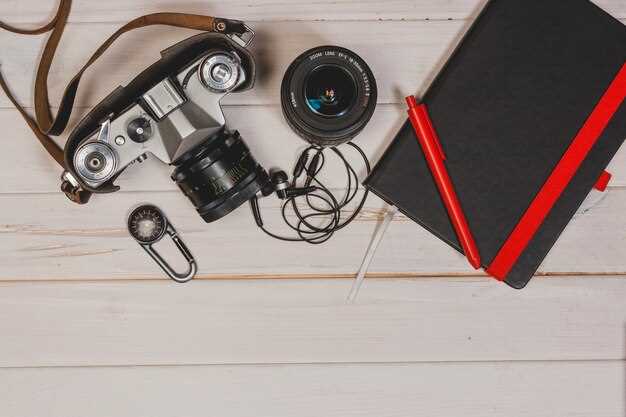
When it comes to capturing stunning photographs, the choice of camera lenses plays a crucial role in achieving the desired results. Different photography styles require specific lenses that can effectively capture the essence of the subject and convey the intended message. Understanding the factors to consider when selecting camera lenses for various photography styles is essential for photographers to enhance their skills and produce exceptional images.
One of the primary factors to consider is the focal length of the lens. Focal length determines the angle of view and the magnification of the subject. For wide-angle photography styles such as landscape or architectural photography, lenses with shorter focal lengths are preferred. These lenses provide a wider field of view, allowing photographers to capture expansive scenes with great detail. On the other hand, telephoto lenses with longer focal lengths are ideal for capturing distant subjects or achieving a compressed perspective in genres like wildlife or sports photography.
The aperture of the lens is another crucial consideration. The aperture determines the amount of light that enters the camera and affects the depth of field in an image. For low-light photography or creating a shallow depth of field, lenses with wider maximum apertures, such as f/1.4 or f/2.8, are preferred. These lenses allow more light to reach the camera sensor, resulting in brighter images and the ability to isolate the subject from the background. On the contrary, lenses with narrower apertures, like f/8 or f/11, are suitable for landscape or street photography, where a larger depth of field is desired to keep the entire scene in focus.
The type of lens also plays a significant role in determining the suitability for different photography styles. Prime lenses, with a fixed focal length, are known for their exceptional image quality and wider maximum apertures. They are popular among portrait photographers for their ability to create a beautiful bokeh effect and produce sharp images. Zoom lenses, on the other hand, offer versatility by providing a range of focal lengths in a single lens. They are preferred for genres like travel or event photography, where the ability to quickly adjust the focal length is essential to capture various subjects and perspectives.
Additionally, considering the build quality and weight of the lens is important, especially for photographers who frequently shoot on location or travel. A sturdy and lightweight lens can make a significant difference in terms of portability and ease of use. Furthermore, compatibility with the camera system, image stabilization capabilities, and the availability of lens accessories like filters or lens hoods are factors that should not be overlooked when choosing camera lenses for different photography styles.
In conclusion, selecting the right camera lenses for different photography styles involves considering factors such as focal length, aperture, lens type, build quality, and compatibility. By understanding these factors and their impact on the final image, photographers can make informed decisions and elevate their photography to new heights.
Exploring the World of Camera Lens Accessories: Filters, Lens Hoods, and More
Delving into the realm of camera lens accessories opens up a world of possibilities for enhancing your photography experience. These accessories, such as filters, lens hoods, and more, can greatly impact the quality and creativity of your images. In this section, we will explore the various camera lens accessories available and how they can elevate your photography to new heights.
Filters: Enhancing Colors, Reducing Glare, and More
Filters are essential tools for photographers looking to add a touch of creativity or improve the quality of their images. These accessories come in various types, each serving a specific purpose. For instance, polarizing filters help reduce glare and enhance colors, making them ideal for landscape photography. Neutral density filters, on the other hand, allow you to control the amount of light entering the lens, enabling you to capture long exposures or achieve a shallow depth of field even in bright conditions. Additionally, there are color filters that can add a specific tint or correct color imbalances in certain lighting situations.
Lens Hoods: Shielding from Unwanted Light and Protecting the Lens
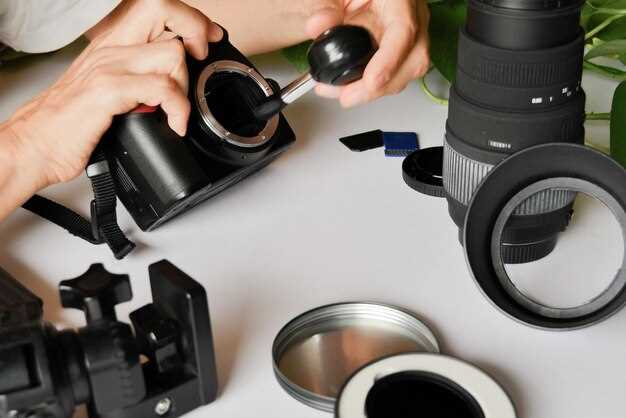
Lens hoods are often overlooked but play a crucial role in improving image quality. These accessories attach to the front of the lens and help prevent unwanted light from entering the lens, reducing lens flare and improving contrast. Lens hoods also provide physical protection to the lens, shielding it from accidental bumps and scratches. They come in various shapes and sizes, designed to match specific lenses, and can be an invaluable addition to your camera gear.
- Extension Tubes: Extension tubes are accessories that allow you to focus closer to your subject, effectively increasing the magnification of your lens. They are particularly useful for macro photography, enabling you to capture intricate details and small subjects.
- Lens Adapters: Lens adapters open up a world of possibilities by allowing you to use lenses from different camera systems on your own camera. This versatility can be beneficial if you have a collection of lenses or want to experiment with different focal lengths or lens characteristics.
- Lens Caps and Lens Cleaning Kits: While seemingly basic, lens caps are essential for protecting the front and rear elements of your lenses from dust, scratches, and other potential damage. Additionally, keeping your lenses clean is crucial for maintaining image quality. Lens cleaning kits provide the necessary tools to keep your lenses in pristine condition.
Exploring the world of camera lens accessories opens up a wealth of opportunities to enhance your photography. Whether you’re looking to add creative effects, improve image quality, or protect your valuable lenses, investing in the right accessories can make a significant difference in your photographic journey.
The Importance of Lens Compatibility: Ensuring Your Lenses Work with Your Camera
When it comes to capturing stunning photographs, the right combination of camera and lens is crucial. However, many photographers overlook the importance of lens compatibility with their camera. Ensuring that your lenses are compatible with your camera is essential for achieving optimal image quality and unlocking the full potential of your equipment.
Understanding Lens Compatibility
Lens compatibility refers to the ability of a lens to work seamlessly with a specific camera body. Different camera manufacturers have their own lens mounts, which are the physical connections that allow the lens to attach to the camera. Each lens mount is designed to fit a specific camera brand or model, and using a lens with the wrong mount can result in compatibility issues.
Compatibility extends beyond just the physical connection. It also involves the electronic communication between the lens and the camera. Modern lenses often have electronic contacts that transmit data to the camera, enabling features such as autofocus, image stabilization, and aperture control. If the lens and camera are not compatible, these features may not work or may be limited in functionality.
The Benefits of Lens Compatibility
Ensuring lens compatibility offers several benefits for photographers. Firstly, it allows you to take full advantage of the features and capabilities of both your camera and lens. This means you can achieve sharper focus, faster autofocus performance, and better image stabilization, resulting in higher-quality photographs.
Additionally, lens compatibility ensures that you have access to a wider range of lenses. Different lenses are designed for specific purposes, such as wide-angle lenses for landscapes or telephoto lenses for wildlife photography. By choosing a camera system with a wide selection of compatible lenses, you have the flexibility to experiment with different focal lengths and styles, expanding your creative possibilities.
Furthermore, lens compatibility can also have financial implications. Investing in a camera system with a wide range of compatible lenses allows you to build a versatile kit over time, without the need to replace your entire setup. This can save you money in the long run and provide a more cost-effective approach to upgrading your gear.
In conclusion, understanding and ensuring lens compatibility is crucial for photographers. By selecting lenses that are compatible with your camera, you can maximize image quality, access a wider range of lenses, and make a more cost-effective investment in your photography gear.
Budget-Friendly Options: Discovering Affordable Camera Lenses and Accessories for Limited Budgets
When it comes to building your photography kit, finding quality camera lenses and accessories doesn’t have to break the bank. Even with a tight budget, there are plenty of options available that can help you capture stunning images without compromising on performance or creativity.
One way to save money on camera lenses is to consider purchasing used or refurbished options. Many reputable retailers offer pre-owned lenses that have been thoroughly inspected and tested, ensuring they are in good working condition. By opting for used lenses, you can often find higher-end models at a fraction of the original price, allowing you to expand your lens collection without exceeding your budget.
Another budget-friendly option is to explore third-party lenses. While major camera manufacturers often have their own line of lenses, there are also independent lens manufacturers that produce high-quality alternatives at more affordable prices. These third-party lenses can offer similar performance and features to their brand-name counterparts, making them a great choice for photographers on a budget.
Additionally, consider investing in versatile lenses that cover a wide range of focal lengths. These all-in-one lenses, also known as zoom lenses, can be a cost-effective solution as they eliminate the need to purchase multiple lenses for different shooting situations. While they may not offer the same image quality as prime lenses, they provide convenience and flexibility, making them ideal for photographers looking to save money.
When it comes to camera accessories, there are also budget-friendly options available. Look for affordable tripods, camera bags, and filters that offer good quality without the hefty price tag. It’s important to prioritize your needs and determine which accessories are essential for your style of photography. By doing so, you can allocate your budget wisely and invest in the accessories that will enhance your shooting experience the most.
In conclusion, finding quality camera lenses and accessories on a tight budget is possible with some careful consideration and research. Whether you opt for used lenses, explore third-party options, or invest in versatile zoom lenses, there are plenty of affordable choices available. Remember to prioritize your needs and make informed decisions to build a photography kit that meets your requirements without breaking the bank.
Tips for Maintaining and Cleaning Your Camera Lenses and Accessories
Ensuring the longevity and optimal performance of your photography equipment is essential for capturing stunning images. Regular maintenance and cleaning of your camera lenses and accessories are crucial to keep them in top condition. By following these tips, you can enhance the lifespan of your gear and maintain the quality of your photographs.
1. Handle with Care: When handling your camera lenses and accessories, it is important to exercise caution and gentleness. Avoid touching the glass surfaces of the lens directly with your fingers, as this can leave fingerprints and smudges. Instead, use a lens cleaning cloth or a blower brush to remove any dust or debris.
2. Clean Regularly: Regular cleaning is vital to prevent the accumulation of dirt, dust, and other particles on your lenses and accessories. Use a soft brush or a blower to remove loose particles before using a lens cleaning solution. Apply a few drops of the solution to a microfiber cloth and gently wipe the lens in a circular motion, starting from the center and moving outward.
3. Protect from Moisture: Moisture can damage your camera lenses and accessories, so it is important to protect them from excessive humidity or rain. Use lens caps and camera bags to shield your gear when not in use. If your equipment gets wet, wipe it dry immediately with a clean cloth and allow it to air dry completely before storing.
4. Store Properly: Proper storage is essential to prevent damage to your camera lenses and accessories. Keep them in a dry and dust-free environment, away from direct sunlight. Use padded camera bags or cases to protect them from accidental bumps or falls. Additionally, store your lenses with their lens caps on to prevent dust and scratches.
5. Avoid Harsh Cleaning Agents: When cleaning your camera lenses and accessories, avoid using harsh cleaning agents or solvents, as they can damage the lens coatings. Stick to specialized lens cleaning solutions or use a mixture of distilled water and mild dish soap. Always apply the cleaning solution to the cloth and not directly to the lens.
6. Regularly Check for Damage: Periodically inspect your camera lenses and accessories for any signs of damage or wear. Check for scratches, cracks, or loose parts. If you notice any issues, it is advisable to have them repaired by a professional to prevent further damage.
7. Use Lens Filters: Lens filters not only enhance the quality of your photographs but also provide an extra layer of protection for your camera lenses. UV filters, polarizing filters, and neutral density filters can help reduce glare, protect against scratches, and improve color saturation.
8. Avoid Excessive Zooming: Excessive zooming in and out can put strain on the lens mechanism, potentially leading to damage. Instead, try to move closer to your subject or use a different lens with the appropriate focal length. This will help maintain the longevity of your camera lenses.
By following these tips for maintaining and cleaning your camera lenses and accessories, you can ensure their longevity and optimal performance, allowing you to capture breathtaking photographs for years to come.


